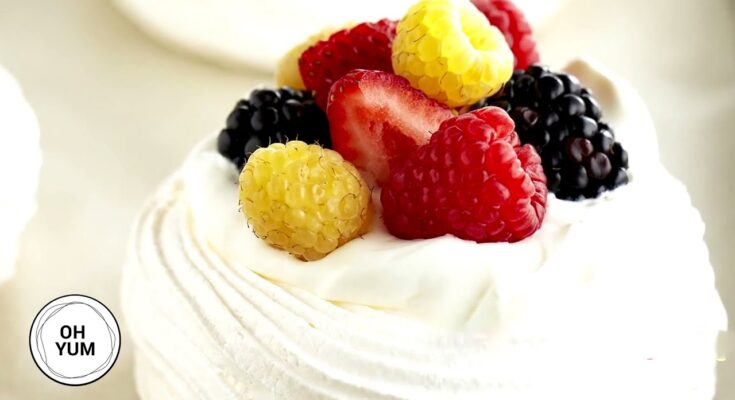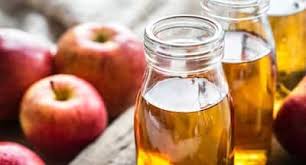Meringue Recipe: Light, airy, and irresistibly sweet, meringue is a culinary marvel with a rich history and universal appeal. Whether topping a luscious lemon pie, forming the base of a pavlova, or baked into delicate cookies, meringue offers versatility and elegance. This guide will walk you through everything you need to know about making perfect meringue every time, no matter your skill level.
Meringue comes in three main types: French, Swiss, and Italian. Each has its unique preparation technique and applications, making it a valuable skill to master for any home cook or baking enthusiast.
Ingredients Needed
To make a basic meringue, you only need a handful of ingredients:
- Egg whites (fresh, from large eggs) – 4
- Granulated sugar – 1 cup
- Cream of tartar (optional) – ¼ tsp
- Vanilla extract (optional) – 1 tsp
- Pinch of salt
Optional additions:
- Cocoa powder for a chocolatey twist
- Food coloring for decorative meringue
Pro tip: Use superfine sugar for quicker dissolving and smoother meringue.
Kitchen Tools Required
Before starting, ensure you have the following tools ready:
- A clean mixing bowl (preferably metal or glass)
- Electric mixer or whisk
- Measuring spoons and cups
- Spatula
- Piping bag with tips (optional)
- Baking sheet and parchment paper
Ensure all tools are grease-free to avoid meringue failure. Any oil residue can prevent egg whites from whipping properly.
Types of Meringue
French Meringue
The simplest and most common type, French meringue is made by whipping egg whites and gradually adding sugar. It’s light and airy, perfect for folding into batters or baking into cookies.
Swiss Meringue
Swiss meringue involves heating egg whites and sugar over a double boiler before whipping. This method creates a stable meringue ideal for piping and buttercream.
Italian Meringue
The most stable of all, Italian meringue is made by streaming hot sugar syrup into whipped egg whites. It’s velvety and glossy, making it perfect for frostings and mousses.
Step-by-Step Recipe for French Meringue
Preparing the Ingredients
- Separate the egg whites: Carefully separate the whites from the yolks. Even a tiny bit of yolk can ruin your meringue.
- Let the egg whites warm up: Room temperature egg whites whip more efficiently and reach better volume.
Whipping the Egg Whites
- Add a pinch of salt and cream of tartar to the egg whites. This helps stabilize the foam.
- Start whisking at low speed until the mixture becomes frothy.
- Gradually increase the speed to medium and continue until soft peaks form.
Achieving Stiff Peaks
- Slowly add sugar, one tablespoon at a time, while continuing to whip.
- Increase the mixer speed to high and whip until the mixture forms glossy, stiff peaks.
- Test by lifting the whisk – the peaks should stand upright without collapsing.
Baking or Using Your Meringue
- Preheat your oven to 225°F (107°C).
- Pipe or spoon the meringue onto a parchment-lined baking sheet.
- Bake for 1-2 hours, depending on size, until the meringue is firm and dry.
Common Mistakes to Avoid
- Overwhipping: This can cause the meringue to become grainy and deflate.
- Dirty tools: Ensure all utensils are free from grease or yolk.
- High heat: Baking meringue at too high a temperature can cause cracks and browning.
Tips for Perfect Meringue Every Time
- Use fresh eggs for the best results.
- Always add sugar slowly to avoid deflation.
- Avoid making meringue on humid days, as moisture can affect its texture.
Creative Meringue Variations
Adding Flavors
Enhance your meringue with extracts like almond, peppermint, or lemon. Zests and spices like cinnamon can also add a unique touch.
Decorative Meringue Shapes
Use piping bags to create fun shapes like swirls, kisses, or hearts. Add food coloring sparingly for a vibrant look.
Serving Suggestions
Serve meringue atop pies, as a base for pavlova, or enjoy them as crispy cookies. Pair with fresh fruits, whipped cream, or chocolate for added decadence.
Storing Meringue
For baked meringues, store in an airtight container at room temperature. Uncooked meringue should be used immediately or refrigerated for up to 24 hours.
Troubleshooting Meringue Issues
- Runny meringue: Start over, as this often means the egg whites were overbeaten or contaminated.
- Grainy texture: Ensure sugar is fully dissolved before baking.
FAQs about Meringue Recipe
1. What is meringue made of?
Meringue is typically made from three simple ingredients: egg whites, sugar, and an acid like cream of tartar or lemon juice. These ingredients are whipped together to create a light and airy texture.
2. What are the types of meringue?
There are three main types of meringue: French, Swiss, and Italian. French meringue is the simplest, made by whipping sugar and egg whites. Swiss meringue involves heating the egg whites and sugar before whipping. Italian meringue is made by adding hot sugar syrup to whipped egg whites.
3. Why does meringue sometimes collapse?
Meringue can collapse due to over-whipping, under-whipping, or exposure to humidity. Ensuring the egg whites are at room temperature and whipping them to the right consistency can help prevent this.
4. How do I make meringue crispy?
To achieve crispy meringue, bake it at a low temperature (around 225°F or 110°C) for a longer time. This allows the meringue to dry out without browning.
5. Can meringue be made without sugar?
Sugar is essential for meringue as it stabilizes the egg whites and provides structure. However, sugar substitutes like powdered erythritol can be used for a low-sugar alternative.
6. How do I store meringue?
Store meringue in an airtight container at room temperature for up to 3 days. Avoid storing it in the refrigerator, as moisture can cause it to become sticky.
7. Can I freeze meringue?
Yes, baked meringue can be frozen for up to a month. Place it in an airtight container to maintain its texture and flavor.
Conclusion
Meringue is a delightful treat that can elevate any dessert. By mastering its preparation and understanding common pitfalls, you’ll be creating bakery-quality meringues at home in no time. So, grab your whisk and get started!



